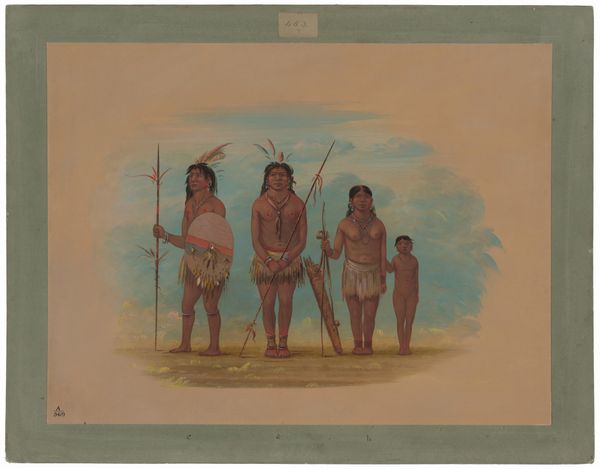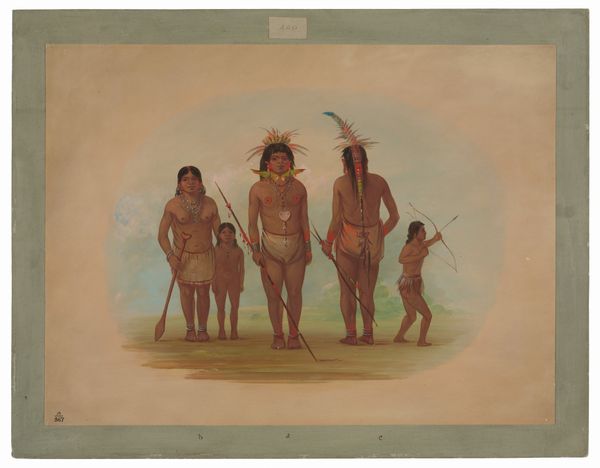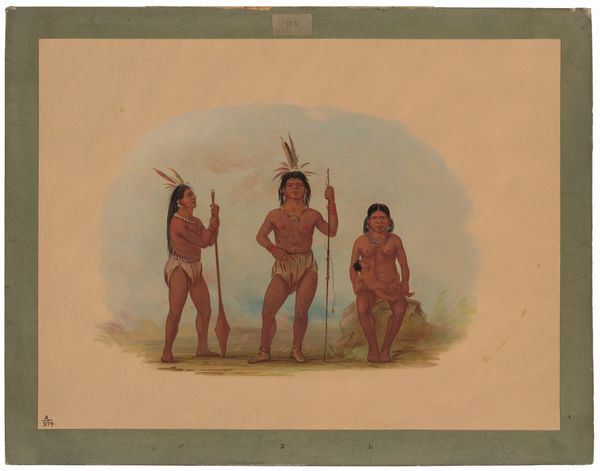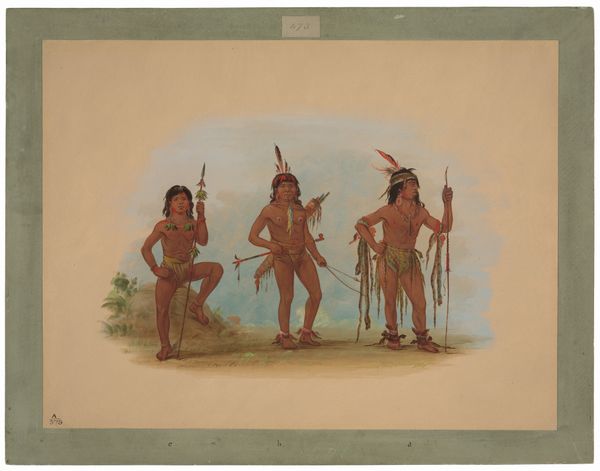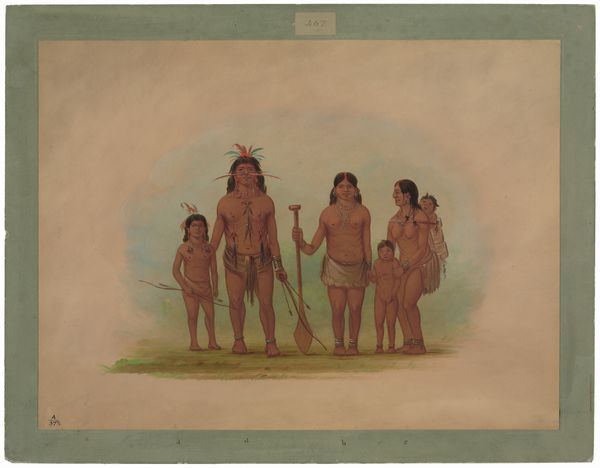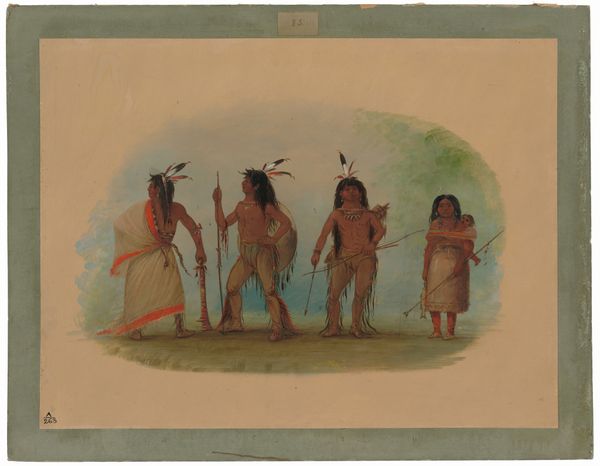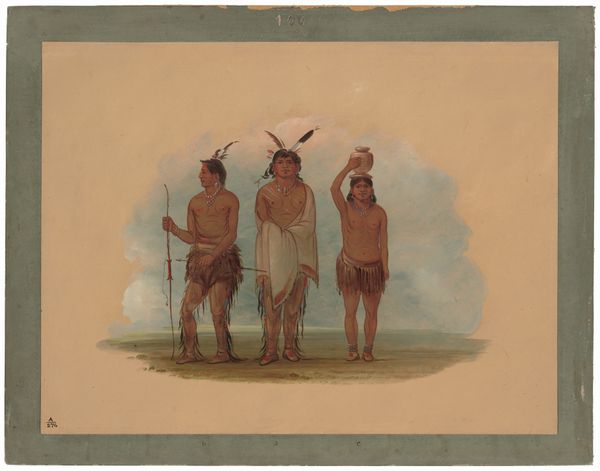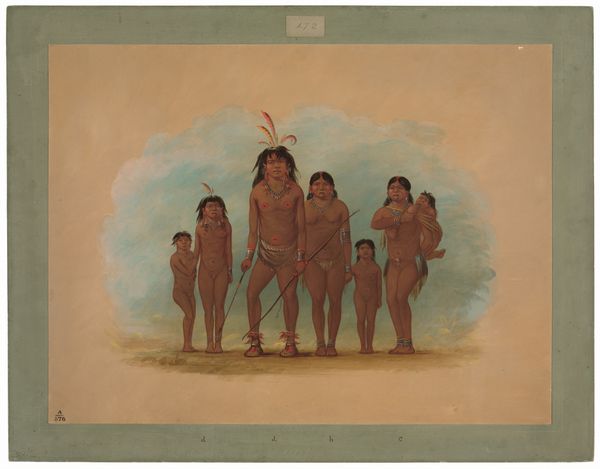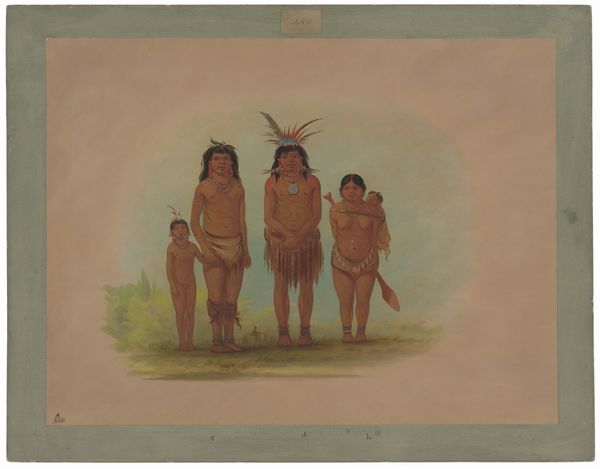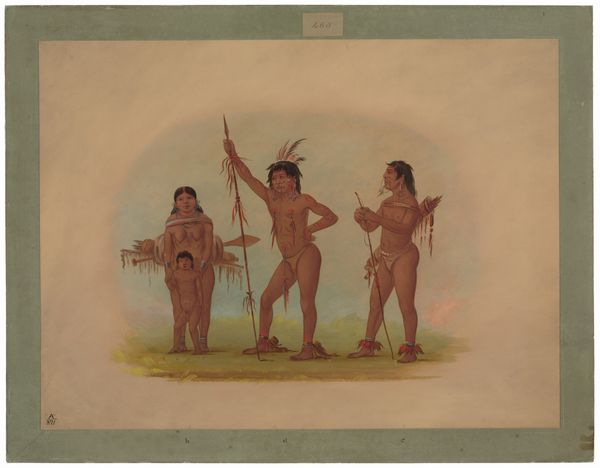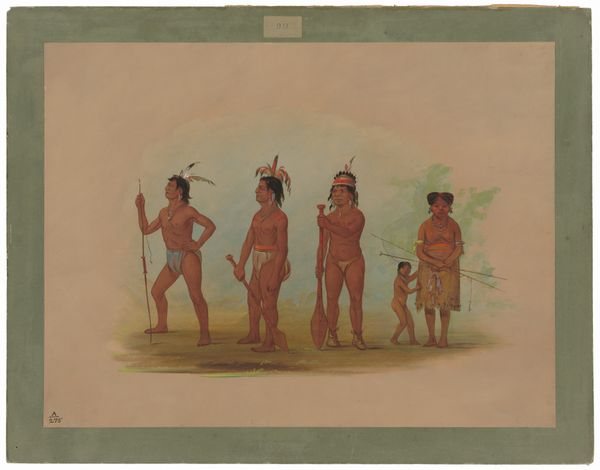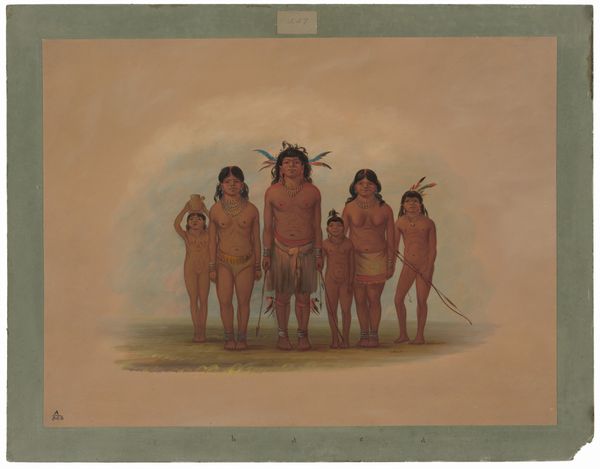
painting
#
portrait
#
water colours
#
painting
#
watercolor
Dimensions: overall: 45.9 x 59.7 cm (18 1/16 x 23 1/2 in.)
Copyright: National Gallery of Art: CC0 1.0
Curator: Let's examine George Catlin's watercolor painting, "A Chetibo Family," created between 1854 and 1869. My initial impression is one of a rather sterile, almost clinical depiction of a family. Editor: Sterile is an interesting choice of words. I see vulnerability. They stand before us with a directness that is disarming. What's most compelling is not merely the surface-level representation, but understanding it in its fraught historical context. Catlin’s images exist amidst the backdrop of westward expansion, cultural disruption, and dispossession, speaking to power dynamics at play. Curator: I'm drawn to the composition itself. Notice the artist places them centrally against this cloudy backdrop. The restrained palette – earth tones with soft blues – focuses our attention on their forms. Their posed stance emphasizes frontality, each figure carefully delineated. It suggests a self-conscious presentation, doesn’t it? Editor: I agree about the deliberate poses. Catlin romanticizes the "noble savage." His work reinforced existing racial hierarchies even when intending to valorize them. Note how details like clothing are accentuated while simultaneously stripping them of their full cultural significance by presenting them outside of communal settings. This romanticizing renders their experiences consumable for a Western audience while conveniently erasing colonial violence. Curator: The watercolor medium lends itself well to a precise articulation of form. I observe that Catlin’s brushstrokes give texture and contour. He doesn't quite render photorealistic detail, but the clarity speaks to careful observation. Editor: Observation informed by a prejudiced gaze, let us remember. What details might Catlin have missed or consciously omitted, swayed as he was by the ethnocentric assumptions that dominated his time? These images became tools shaping public opinion towards Indigenous peoples in ways that further justified land grabs. So we must ask ourselves: what does it mean to view their humanity through an undeniably compromised lens? Curator: These are crucial points about the complicated history within this piece, it's impossible to look away from. In closing, one sees how seemingly straightforward formal analyses open onto incredibly charged ideological grounds. Editor: Precisely, seeing the interplay of aesthetics and power compels us towards rigorous honesty, transforming our engagement.
Comments
No comments
Be the first to comment and join the conversation on the ultimate creative platform.
